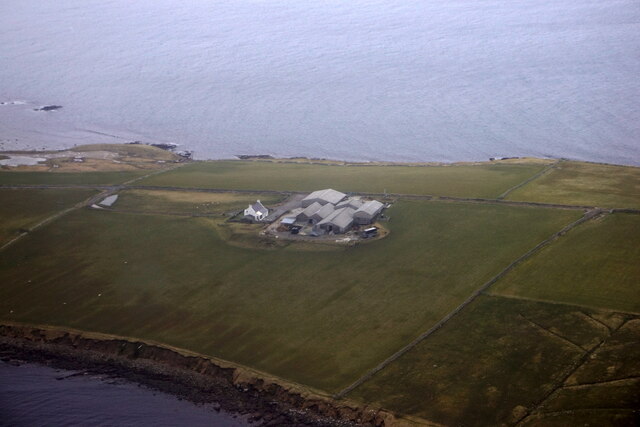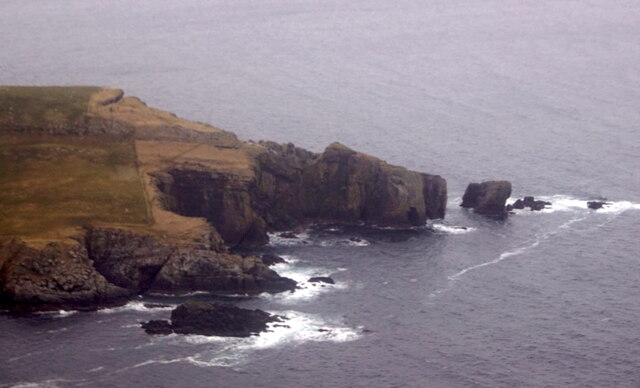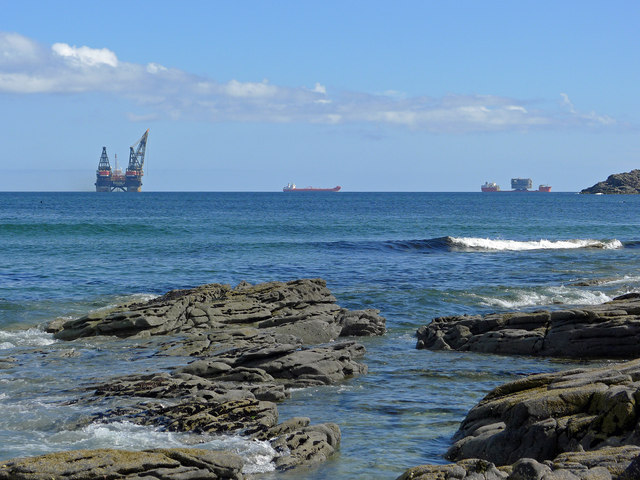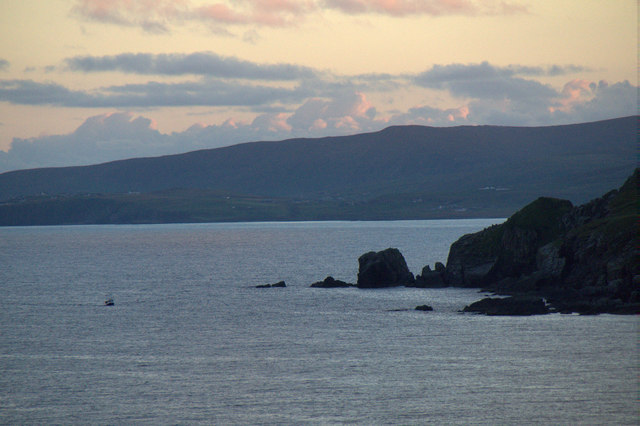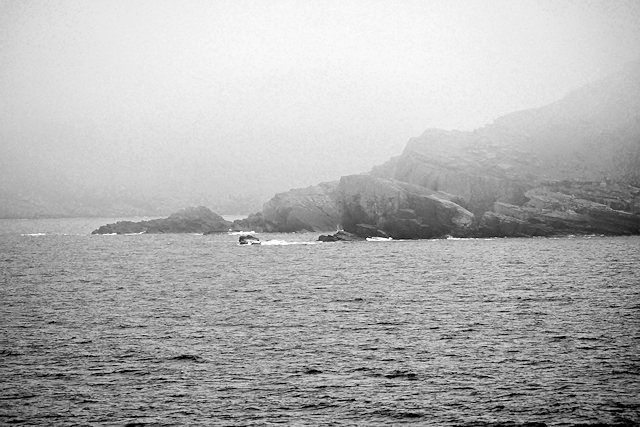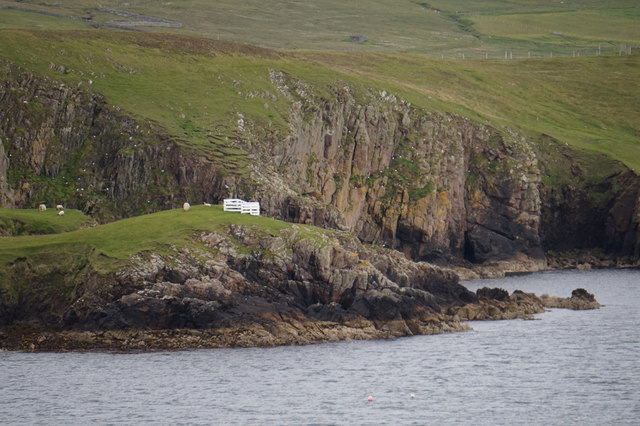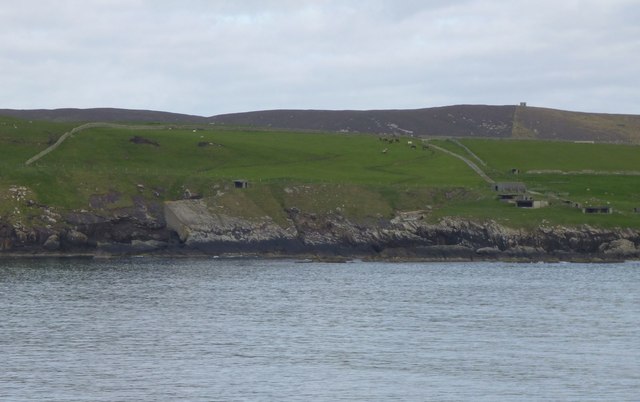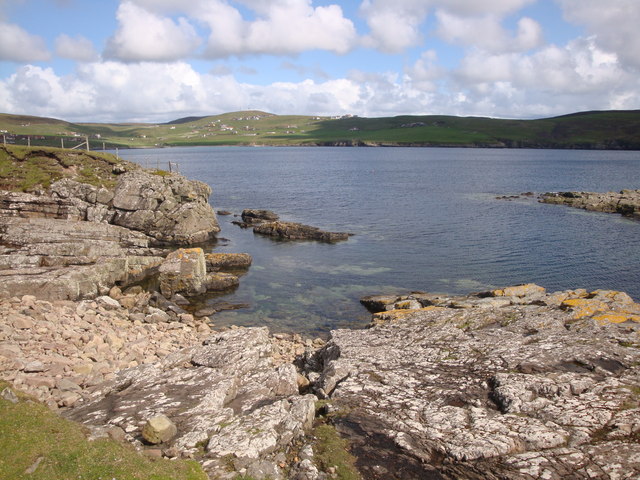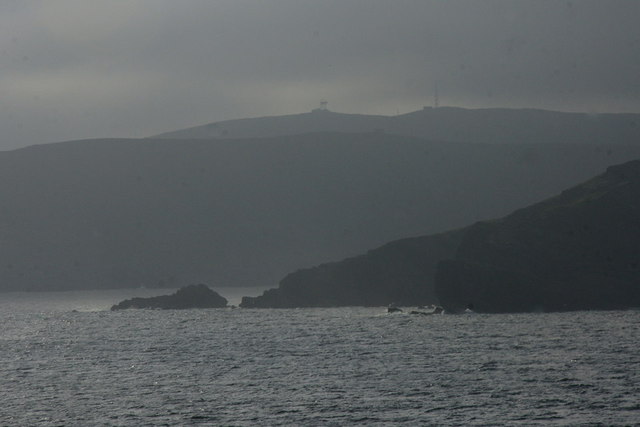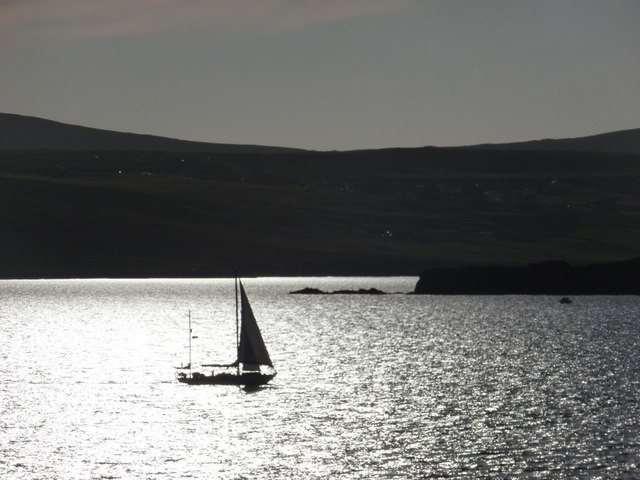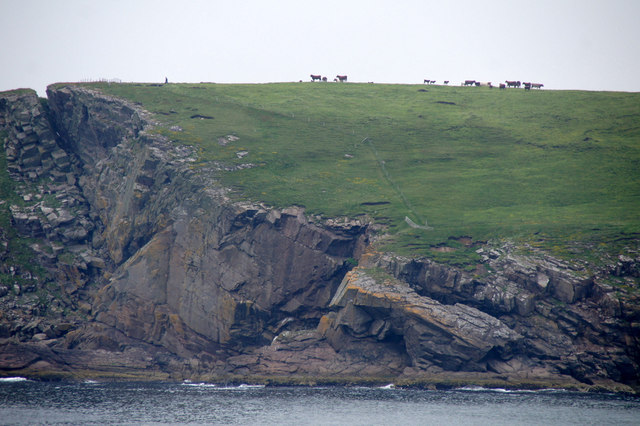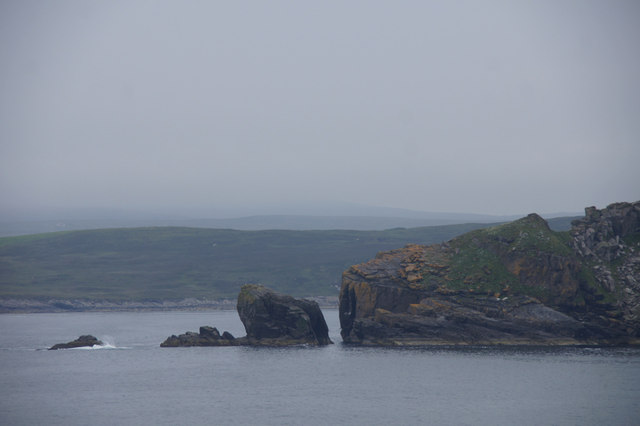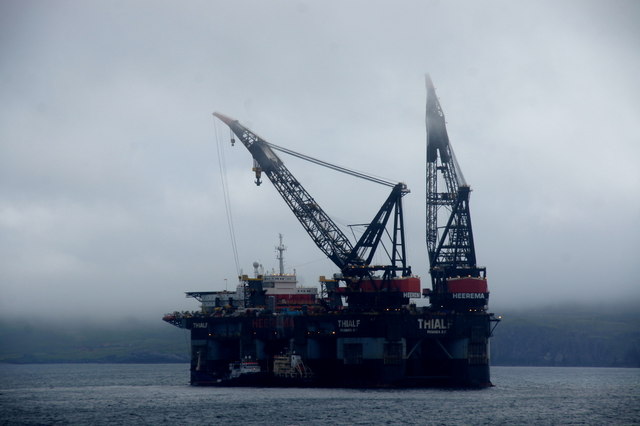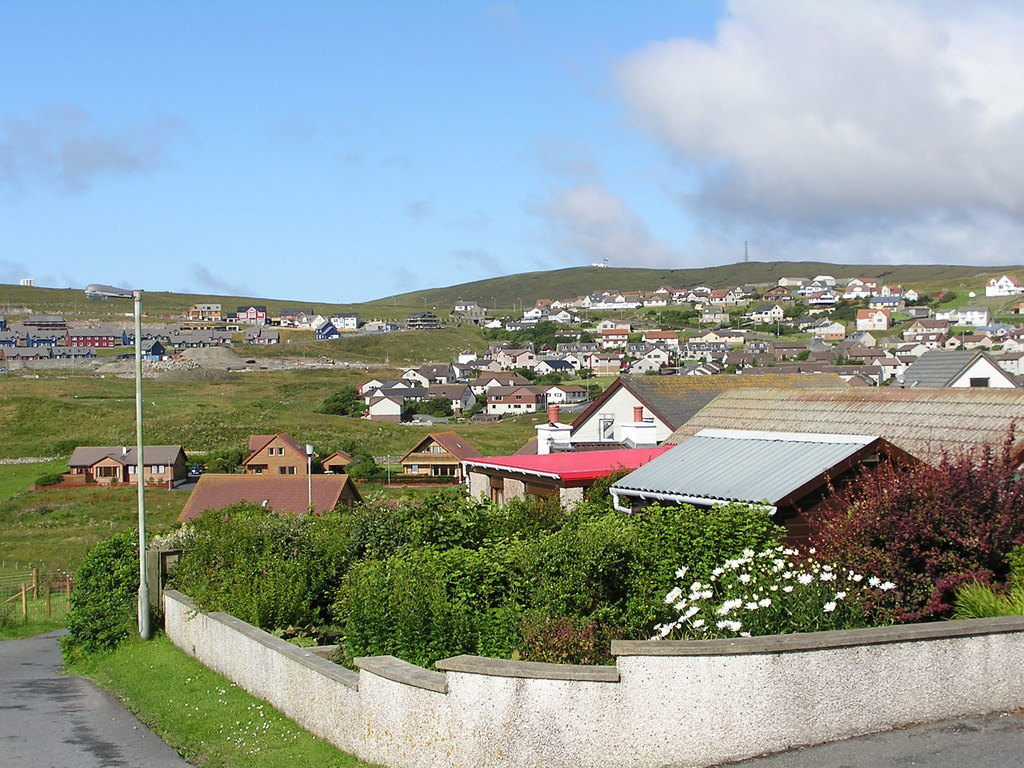The Nizz
Coastal Feature, Headland, Point in Shetland
Scotland
The Nizz
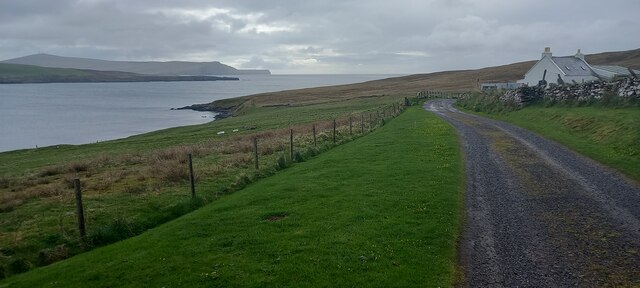
The Nizz is a prominent coastal feature located on the Shetland Islands, an archipelago off the northeastern coast of Scotland. Specifically, it is situated on the mainland of Shetland, near the village of Scalloway. The Nizz is classified as a headland or point, as it extends out into the North Sea, forming a distinct and prominent landform.
This coastal feature is characterized by its rugged and rocky terrain, with steep cliffs that rise vertically from the sea. The cliffs are composed of layers of sedimentary rocks, showcasing the geological history of the region. The Nizz offers breathtaking panoramic views of the surrounding coastline and the vast expanse of the North Sea.
The area surrounding The Nizz is known for its diverse and abundant wildlife. Seabirds, such as puffins, guillemots, and kittiwakes, can be spotted nesting on the cliffs, while seals and otters can often be seen frolicking in the waters below. The surrounding waters are also home to a variety of fish species, making it a popular spot for fishing enthusiasts.
In addition to its natural beauty, The Nizz holds historical significance. It is believed to have been a strategic location during the Viking era and was used as a lookout point due to its elevated position. Remnants of ancient structures and artifacts have been discovered in the vicinity, providing insights into the area's rich cultural heritage.
The Nizz is a must-visit destination for nature lovers, history enthusiasts, and adventure seekers alike, offering a unique combination of stunning landscapes, wildlife encounters, and a glimpse into the past.
If you have any feedback on the listing, please let us know in the comments section below.
The Nizz Images
Images are sourced within 2km of 60.121145/-1.1722834 or Grid Reference HU4637. Thanks to Geograph Open Source API. All images are credited.
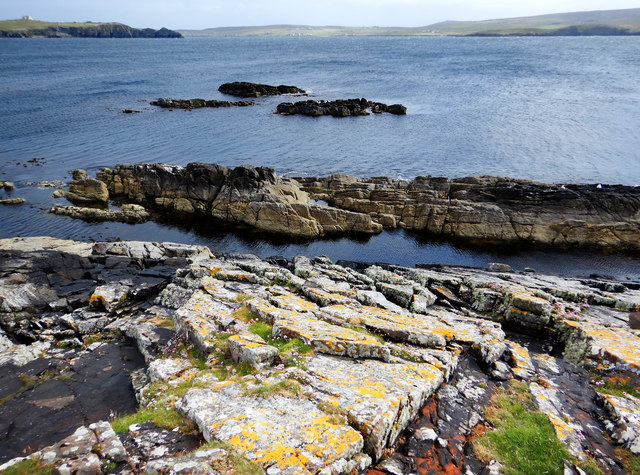
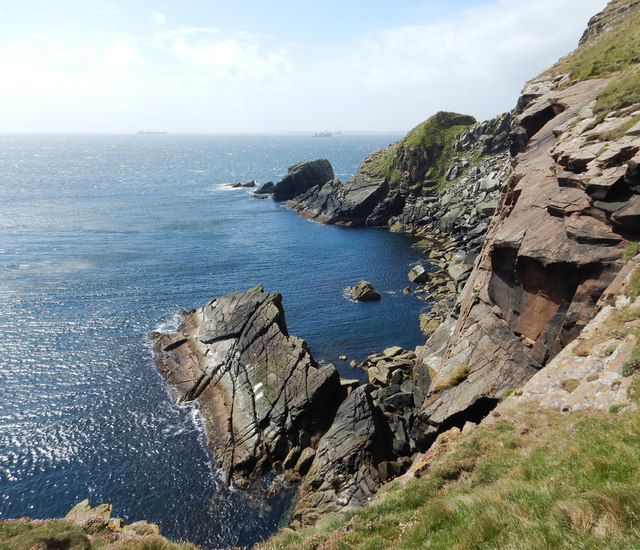
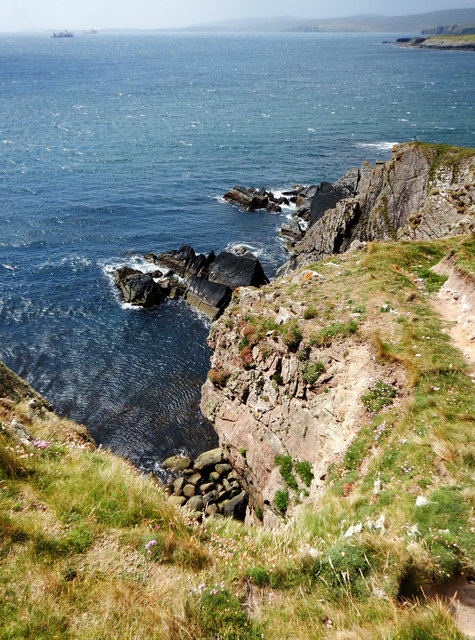
The Nizz is located at Grid Ref: HU4637 (Lat: 60.121145, Lng: -1.1722834)
Unitary Authority: Shetland Islands
Police Authority: Highlands and Islands
What 3 Words
///stems.dream.outgoing. Near Lerwick, Shetland Islands
Nearby Locations
Related Wikis
Lerwick Observatory
Lerwick Observatory (also known as Lerwick Magnetic Observatory) is a British meteorological observatory located near the port at Lerwick, Shetland Islands...
Gulberwick
Gulberwick is a village on Mainland, 2.5 mi (4 km) southwest of Lerwick, Shetland, Scotland, which contains approximately 200 houses. In recent years the...
Brindister, South Mainland
Brindister is a village on South Mainland in Shetland, Scotland. Brindister is within the parish of Lerwick, and adjacent to the A970 south of Gulberwick...
Sound, Lerwick
Sound is an area situated to the south-west of central Lerwick, the capital of Shetland, Scotland.Sound is home to a primary school, public hall, and gospel...
Have you been to The Nizz?
Leave your review of The Nizz below (or comments, questions and feedback).
